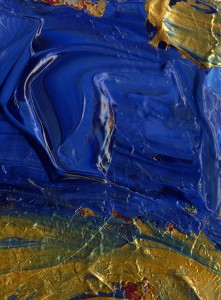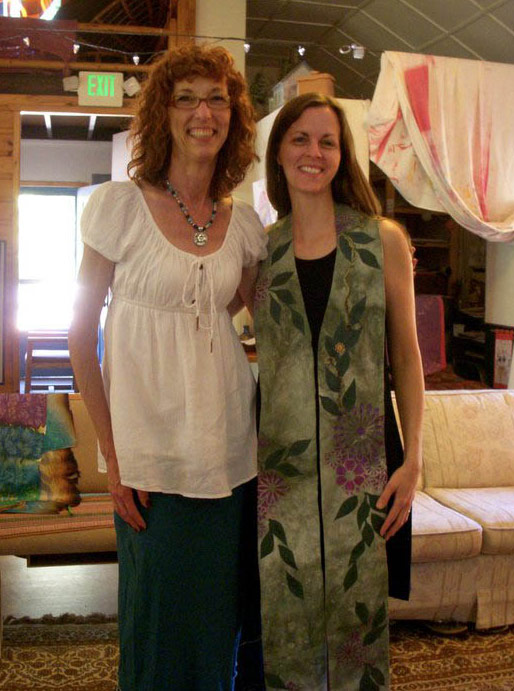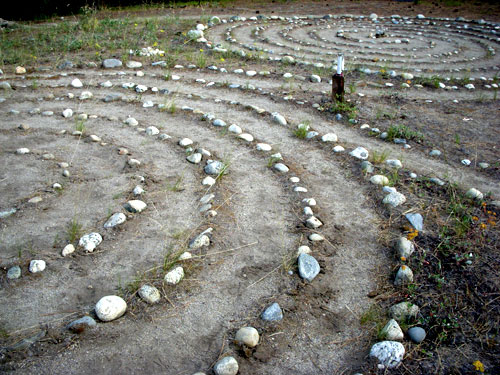
Wise Women Also Came © Jan L. Richardson
In some parts of the world, Epiphany (January 6, which brings the Christmas season to a close) is celebrated as Women’s Christmas. Originating in Ireland, where it is known as Nollaig na mBan, Women’s Christmas began as a day when the women, who often carried the domestic responsibilities all year, took Epiphany as an occasion to enjoy a break and celebrate together at the end of the holidays.
Whether your domestic duties are many or few, Women’s Christmas is a good time to pause and take a break from whatever has kept you busy and hurried in the past weeks or months. As the Christmas season comes to a close, this is an occasion both to celebrate with friends and also to spend time in reflection before diving into the responsibilities of this new year.
As a contribution to your contemplation and celebration, I’ve created a retreat for you to use for Women’s Christmas—or anytime you’re in need of a space of reflection. Titled “The Map You Make Yourself,” the retreat is designed as a mini-pilgrimage into your own life. With readings, blessings, and art, the retreat offers an invitation to ponder where your path has taken you, what you’re noticing in your life right now, and what you’re dreaming for the path ahead.
The retreat is very flexible, easily adaptable to your own purposes. You can do the retreat with friends near or far, or perhaps simply select a single reflection or two as a starting point for conversation. The retreat includes an introduction with some thoughts about how you might engage these reflections.
You can download the retreat as a PDF by clicking the link below. There’s no cost; think of it as my Women’s Christmas gift to you! You are welcome to make copies of the retreat to share with friends. And I’d be delighted for you to spread the word about the retreat by sharing this blog post; you can use any of the social media icons at the bottom of this post or simply forward the link to others.
Download the Women’s Christmas Retreat
I’ve also written a Women’s Christmas blessing for you. As we celebrate the day and enter into the year ahead, may you journey well and walk with wisdom.
The Map You Make Yourself
A Blessing for Women’s Christmas
You have looked
at so many doors
with longing,
wondering if your life
lay on the other side.
For today,
choose the door
that opens
to the inside.
Travel the most ancient way
of all:
the path that leads you
to the center
of your life.
No map
but the one
you make yourself.
No provision
but what you already carry
and the grace that comes
to those who walk
the pilgrim’s way.
Speak this blessing
as you set out
and watch how
your rhythm slows,
the cadence of the road
drawing you into the pace
that is your own.
Eat when hungry.
Rest when tired.
Listen to your dreaming.
Welcome detours
as doors deeper in.
Pray for protection.
Ask for the guidance you need.
Offer gladness
for the gifts that come
and then
let them go.
Do not expect
to return
by the same road.
Home is always
by another way
and you will know it
not by the light
that waits for you
but by the star
that blazes inside you
telling you
where you are
is holy
and you are welcome
here.
P.S. For another reflection on Epiphany, visit this post at my blog The Painted Prayerbook:
Epiphany: Blessing of the Magi
DECEMBER 2013 UPDATE: New Women’s Christmas Retreat coming soon!
We’ll soon have a brand-new retreat ready for Women’s Christmas 2014! It will be available shortly at the Women’s Christmas page here at the Sanctuary of Women site.
[The Wise Women Also Came image is © Jan L. Richardson from the book Night Visions: Searching the Shadows of Advent and Christmas. To use this image, please visit this page at Jan Richardson Images.]









